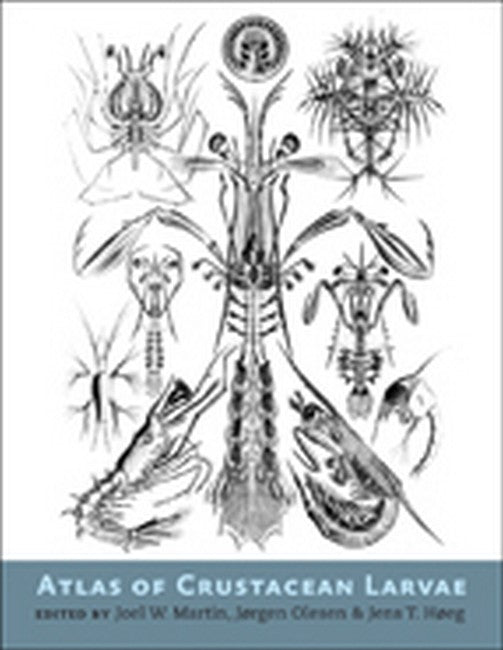Crustaceansfamiliar to the average person as shrimp, lobsters, crabs, krill, barnacles, and their many relativesare easily one of the most important and diverse groups of marine life forms. Poorly understood, they are among the most numerous invertebrates on earth. Most crustaceans start life as eggs and move through a variety of morphological phases prior to maturity. In Atlas of Crustacean Larvae, more than 45 of the world's leading crustacean researchers explain and illustrate the beauty and complexity of the many larval life stages.Revealing shapes that are reminiscent of aliens from other worldsoften with bizarre modifications for a planktonic life or for parasitization, including (in some cases) bulging eyes, enormous spines, and aids for flotation and swimmingthe abundant illustrations and photographs show the detail of each morphological stage and allow for quick comparisons. The diversity is immediately apparent in the illustrations: spikes that deter predators occur on some larvae, while others bear unique specializations not seen elsewhere, and still others appear as miniature versions of the adults. Small differences in anatomy are shown to be suited to the behaviors and survival mechanisms of each species.Destined to become a key reference for specialists and students and a treasured book for anyone who wishes to understand ""the invertebrate backbone of marine ecosystems,"" Atlas of Crustacean Larvae belongs on the shelf of every serious marine biologist.Joel W. Martin is chief of the Division of Invertebrate Studies and curator of crustacea at the Natural History Museum of Los Angeles County. Jørgen Olesen is an associate professor and curator of crustacea at the Zoological Museum of The University of Copenhagen. Jens T. Høeg is an associate professor of biology at the University of Copenhagen.

